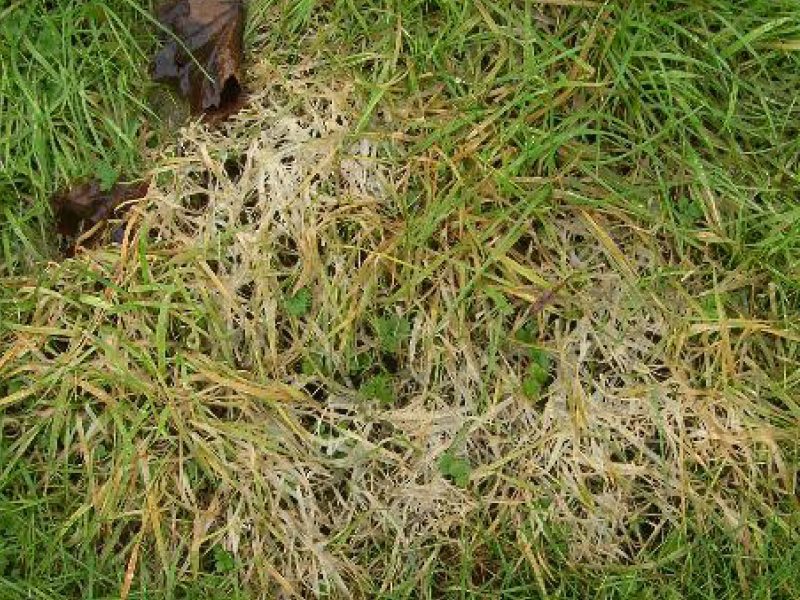

What is fusarium?
Fusarium is a fungal lawn disease caused by the fungus Microdochium nivale. The effects of the disease can be seen throughout the year, but mostly through the autumn/winter months. Some strains of fusarium are referred to as snow mould as they thrives in very cold conditions and often grow quickly under a layer of snow. The effects are usually only seen once the snow has melted.
How do I know if my lawn has fusarium?
Initially, the lawn will begin to show small patches of white ‘fluff’. This white fluff is mycelium, the reproductive part of the fungus.
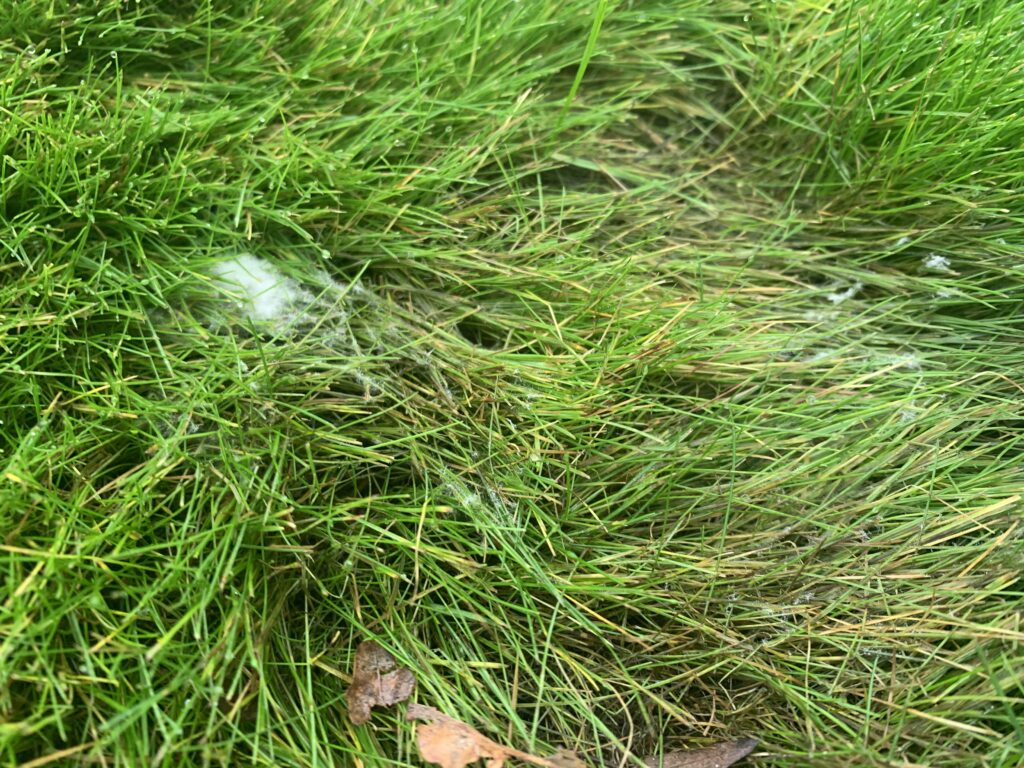

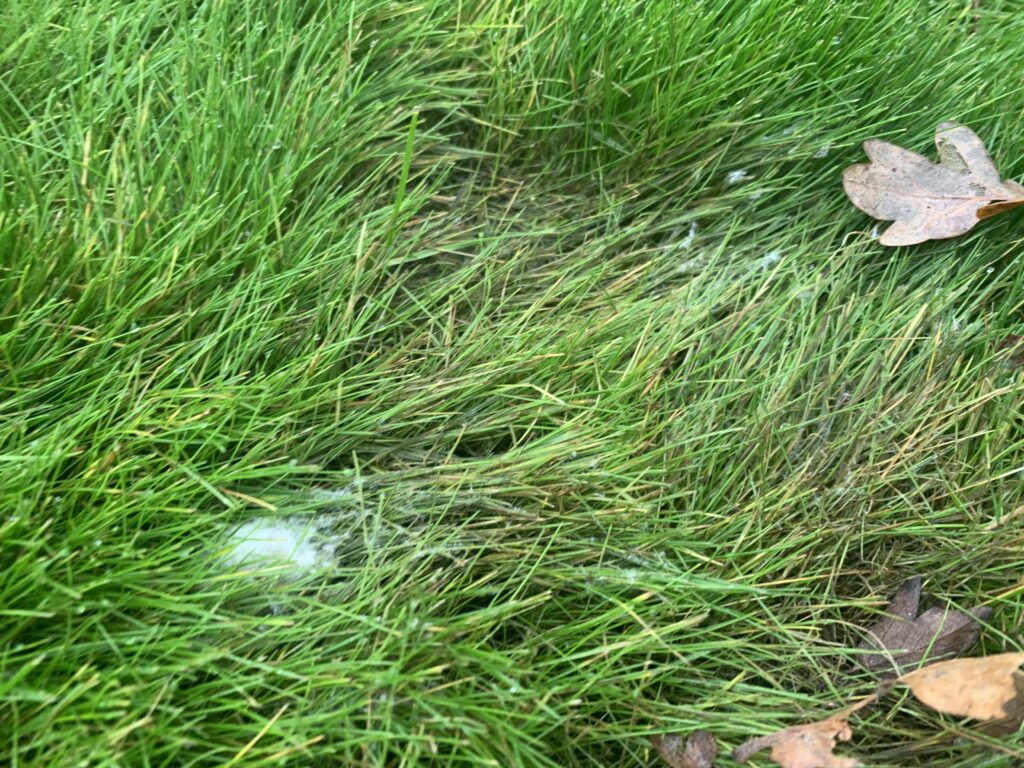

It’s common to find areas of grass ‘lying flat’ as the mycelium forms over it.
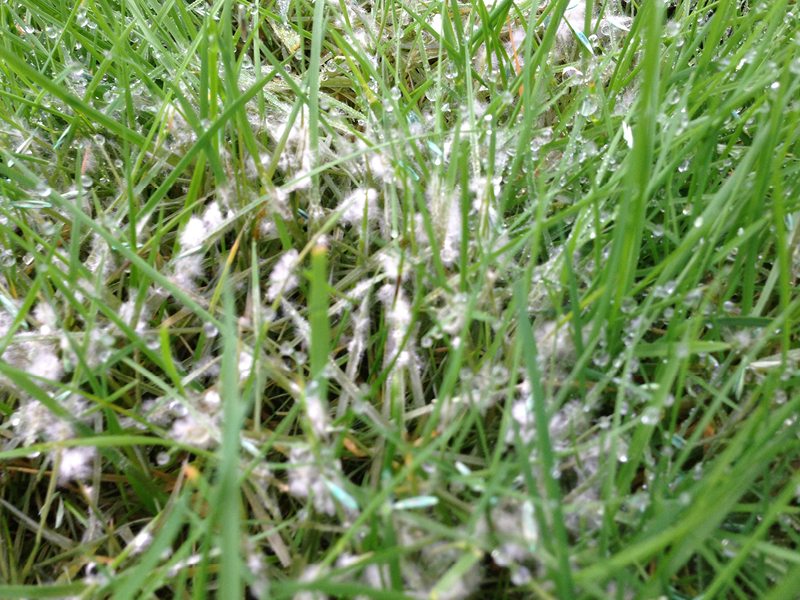

As the disease grows, it destroys the leaves of the grass plants, leaving bare patches:




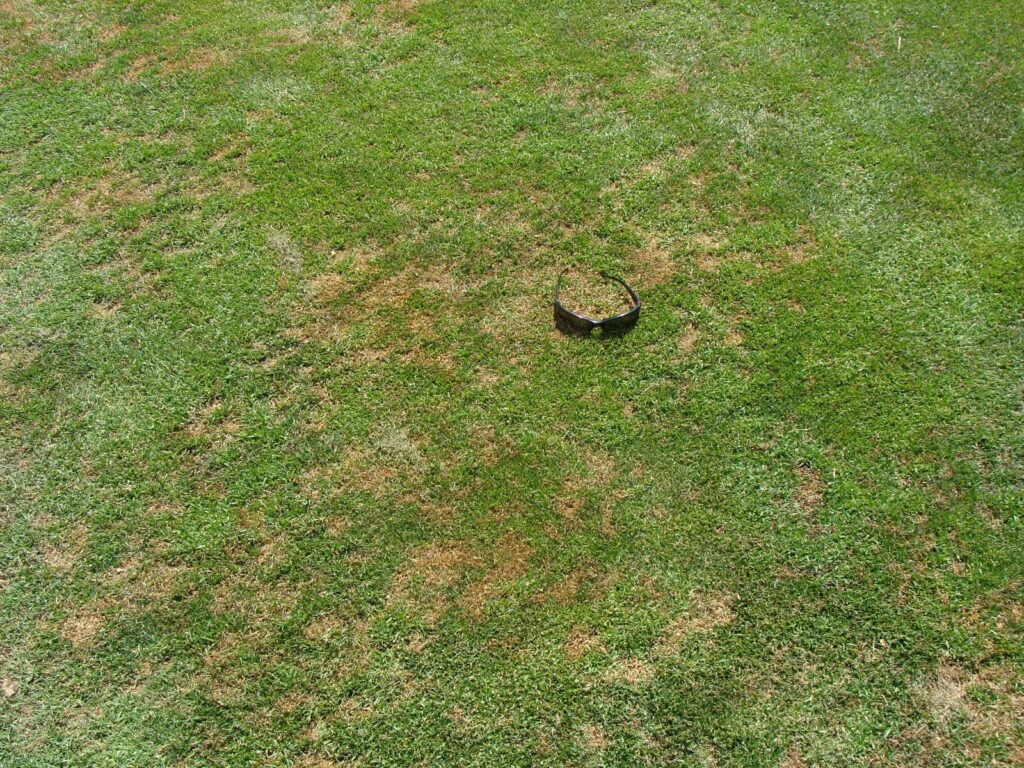

During the growing season, it is common to find patches such as those shown in this picture. Fusarium can be difficult to diagnose due to the different types of patches it can leave in the lawn, often without the presence of the most common tell-tale signs.
How did fusarium get in my lawn?
Fungal diseases spread by releasing spores into the air, which can be carried by the wind, insects or birds.
A reduced amount of airflow caused by surrounding buildings and garden fences creates a perfect growing environment for fusarium. However, it can also be seen in lawns that are suffering from plant stress. This is usually caused by various different factors, including poor cutting practices, drought, thatch and soil compaction.
How do I control fusarium in my lawn?
Fusarium can controlled in the short term by applying a fungicide treatment. This will tackle the problem head on, but may not prevent it returning.
To help reduce the chances of getting fusarium in the future, it is best to improve the lawn’s overall condition by using Green Man Lawn Care Booster Treatments (scarifying, aerating and overseeding) on an annual basis, combined with a seasonal fertiliser program.
